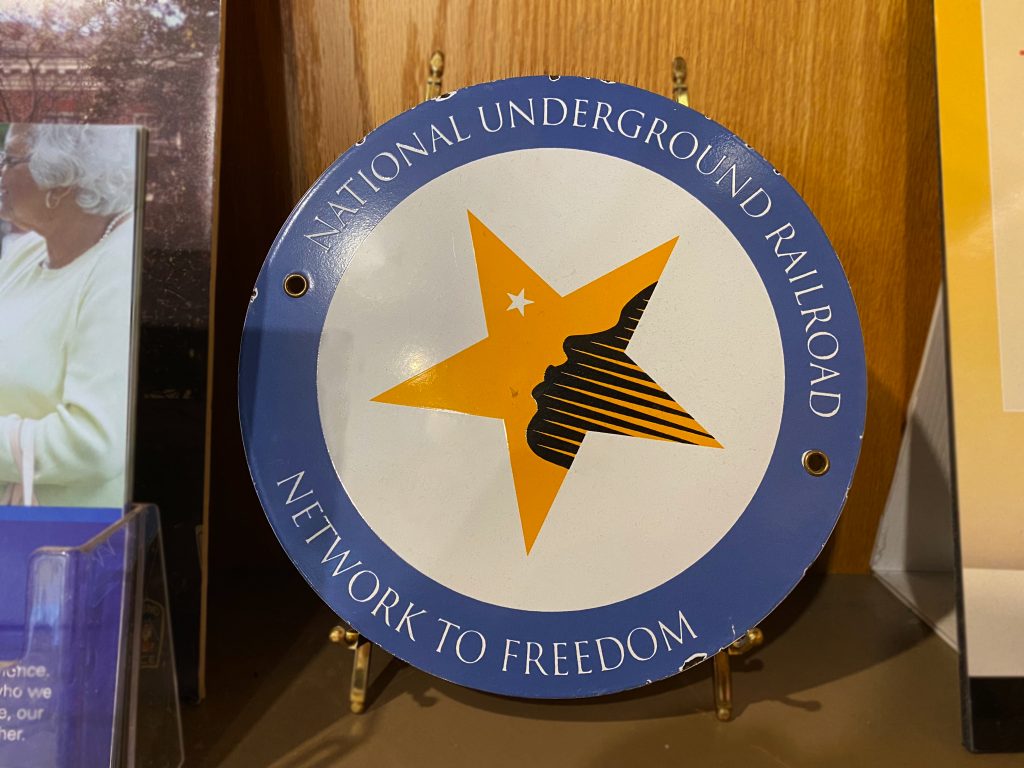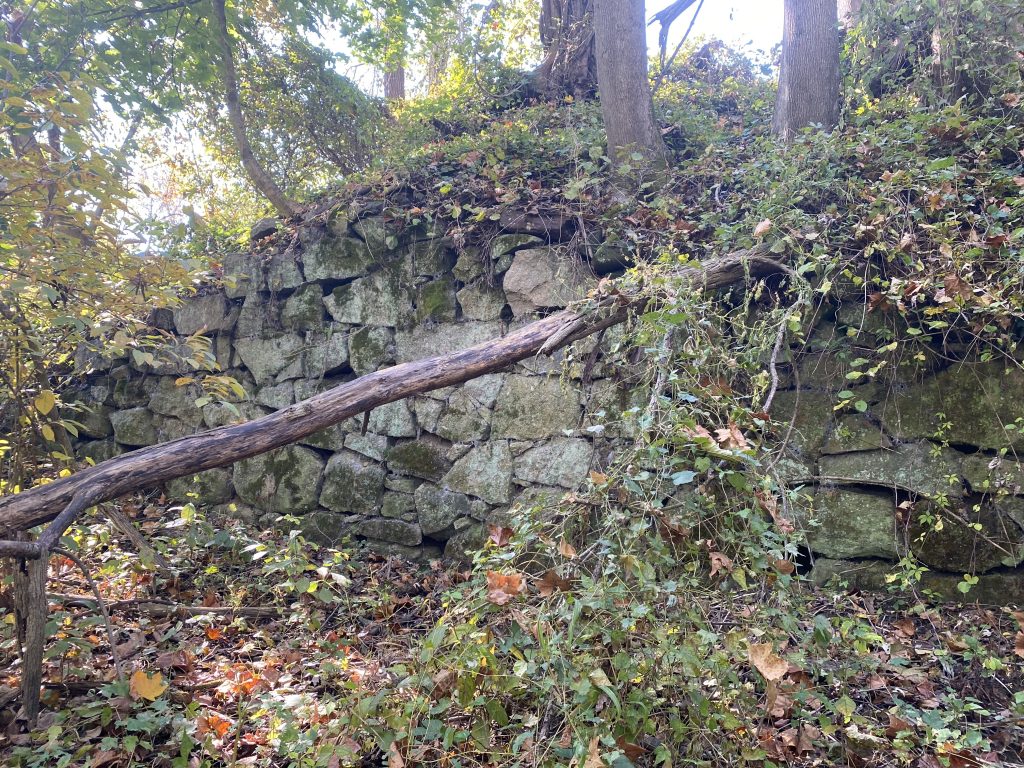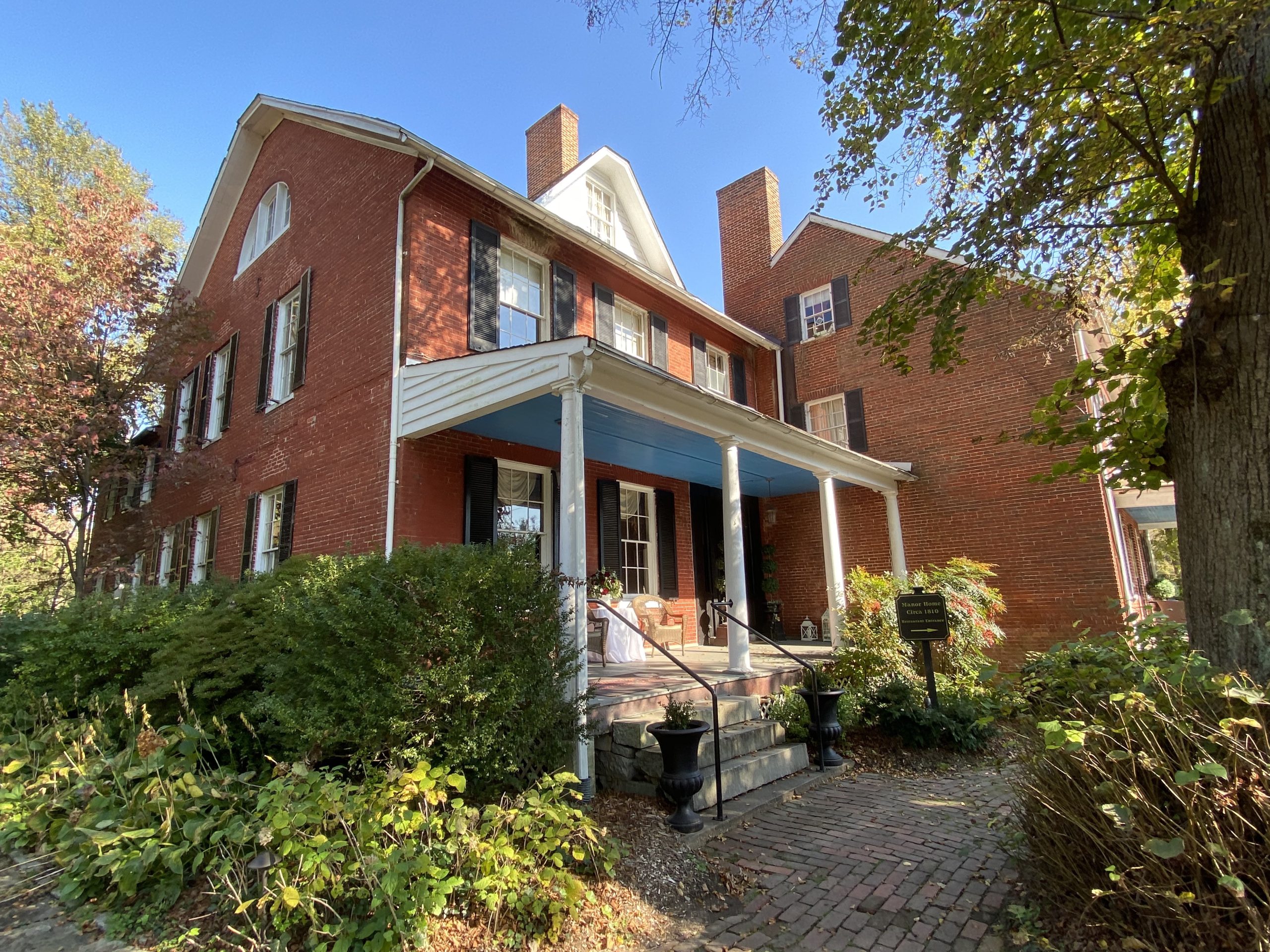ANNAPOLIS, Md. — The National Underground Railroad Network to Freedom has added four new sites in Maryland as part of its mission to preserve the history of those who sought freedom from slavery.
These latest Underground Railroad sites provide further insight into Maryland’s slavery history by reconstructing the stories of freedom seekers using research to safeguard the past for future generations, according to several researchers and network representatives.
Historically, freedom seekers were enslaved people who sought freedom through escape. The network recognizes the journey that freedom seekers took using the Underground Railroad, and those who aided their escape.
“We are empowering communities and descendants to tell their stories,” National Program Manager for the Underground Railroad Network to Freedom Diane Miller told Capital News Service.
The National Underground Railroad Network to Freedom aims to remember and recognize the history of enslaved people who ventured to escape slavery, and those who aided their journey toward freedom, Miller said.
Since its inception in 1998, the National Underground Railroad Network to Freedom has been responsible for inducting nearly 700 sites, programs and facilities in several states and territories across the country.
As of this fall, Maryland holds over 90 National Underground Railroad Network to Freedom listings, according to the Maryland Department of Commerce Office of Tourism.
Maryland’s sizable contribution to the network is in large part due to its history of having a significant free Black population and its proximity to border states that didn’t utilize slave labor, making freedom more accessible than other states.
The state has an extensive history in its association with the Underground Railroad.
Prominent abolitionist figure Harriet Tubman escaped slavery in Maryland and went on to aid several other slaves to freedom using Underground Railroad sites. Her contributions to the liberation of slaves from bondage in the state makes Maryland a notable destination for those looking to learn more about the Underground Railroad.
Among Maryland’s submissions for fall 2021, only four passed the network’s rigorous test for consideration — the Elkridge Furnace at Patapsco Valley State Park in Howard County, the Eliza Parker Escape Site at Belle Vue Farm in Harford County, the Henry Massey Escape Site at Stoopley Gibson Manor in Kent Island and the Mount Clare Railroad Station in Baltimore.
Historians seeking nominations to the National Underground Railroad Network to Freedom work with site managers to prepare applications that use primary sources linking the site to the Underground Railroad. Primary sources often include newspapers containing runaway slave ads, diaries of freedom seekers, and family documents.
“It’s a bit like being a detective because you’re finding bits and pieces of information and a whole bunch of different sources (that) you have to kind of put together to make sense of it,” Miller said.
Applicants meet with regional coordinators, and if a site meets the criteria, the documents are then passed to a review committee for decision. Sites that can prove their legitimacy through historical evidence and earn a majority vote by members of the review committee are accepted into the network, according to Miller.
The four new sites inducted into the National Underground Network to Freedom were made possible by the “Maryland Department of Commerce Office of Tourism’s ‘Four Fellowships for 400: Sharing Maryland’s Underground Railroad Stories’ project. The project partnered with the Legacy of Slavery program at the Maryland State Archives and was funded by a grant from the 400 Years of African American History Commission,” a press release issued Nov. 1 by the Maryland Department of Commerce Office of Tourism said.
The Legacy of Slavery program at the Maryland State Archives, a research program recognized by the network, provided research fellows with the necessary tools to find records that would link freedom seekers to Underground Railroad sites, Legacy of Slavery Program Director Chris Haley told Capital News Service.
In addition to Underground Railroad sites, the National Underground Railroad Network to Freedom accepts programs and facilities that work to educate the public on the history of slavery.

The Maryland State Archives is a valuable resource for those researching potential sites, and is recognized as one of the facilities included as part of the network.
“The Network to Freedom requires the fellows to do research, and hopefully come up with (evidence) in order to confirm either a Network to Freedom site, or research facility,” Haley said.
The original structure of Mount Clare Station is now part of the B&O Railroad Museum in Baltimore. Research by Executive Director of the B&O Railroad Museum Anna Kresmer, Jonathan Goldman, the chief curator for the museum and their team uncovered evidence of over 20 freedom seekers who passed through the station on their way to freedom.
Goldman worked with several other researchers for a year to research and produce a 63-page document that led to the recent addition of Mount Clare Railroad Station to the Network of Freedom.
“Our archivist (Anna Kresmer) said it was the equivalent of doing (her) dissertation,” Executive Director of the B&O Railroad Museum Kris Hoellen said. “It was like peeling back the layers of an onion in the sense that they would find more information and it would lead to other pieces of the story,” she said.
For freedom seekers traveling north, Mount Clare Station, which connected Baltimore and Ohio through the B&O Railroad, provided a physical and innovative mode of transportation for escape on the Underground Railroad.
Henry “Box” Brown was one such figure who utilized the railroad system at Mount Clare Station. His harrowing journey included shipping himself in a box where he had to remain still despite the uneven motion of the train, Hoellen said.
Brown’s story along with several other freedom seekers is scheduled to be displayed at a new B&O Railroad Museum exhibit on the history of Mount Clare Station slated for 2022.
Matthew LaRoche, a graduate student assistant for the special collection and university archives at the University of Maryland College Park, was one of four recipients to be awarded a fellowship.
LaRoche contributed to the research and writing process of two sites inducted into the network — the Parker and Massey sites.
Research by LaRoche helped identify two freedom seekers who encountered the harsh consequences of the Fugitive Slave Act of 1850 — Eliza Parker and Henry Massey. Belle Vue Farm and Stoopley Gibson Manor were the sites of their escapes from slavery.
Parker and her family were successful in their escape and settled in free Christiana, Pennsylvania. While living among several runaway slaves, they were involved in a shootout protecting those men from capture due to the fugitive slave law, LaRoche said.
Little is known about Parker’s and Massey’s escapes, evidence uncovered by LaRoche found that Massey was designated as a victim of the fugitive slave law and returned.
With the work LaRoche put in to prove the people and stories were tied to these locations, both escape sites were added to the National Underground Railroad Network to Freedom.
“(The National Underground Railroad Network to Freedom) is the gold standard for Underground Railroad research. So having a site that you can document that will be accepted into this program is a really remarkable thing for the site,” LaRoche said.
Across the three sites that LaRoche worked on, he wrote 120 pages over the course of seven months. However, one site didn’t make the cut. For many sites looking to be added to the network, some don’t make it the first go around.
For LaRoche, documenting and having access to historical resources is important in helping to preserve and promote sites.
The fourth Maryland site receiving the honor of being inducted into the National Underground Railroad to Freedom this year is the Elkridge Furnace.
The research consisting of several runaway slave advertisements that yielded a 15-page application proving the legitimacy of the site as part of the Underground Railroad was written by Sophie Hess, a doctoral candidate at the University of Maryland.

Through her research, Hess was able to confirm that seven slaves escaped from the back-breaking labor required to run the furnace and produce iron. However, not all were successful escaping the deplorable and inhumane conditions.
Two detailed runaway slave advertisements describe the same person named Toby. The advertisements are roughly a year apart and the second one stated that he ran away the day prior.
Using Toby’s runaway slave ads and several others, which were dated around the same time of year, Hess was able to discern that the Elkridge slaves were escaping in the summer months when working conditions were at their harshest.
“(What’s) really important about doing these sort of Underground Railroad projects is really centering and recovering stories of people who risked their own lives to resist slavery in an attempt to gain freedom,” Hess said.
With the addition of four sites to the National Underground Network to Freedom, Maryland has more than 90 sites, programs and facilities recognized by the Network, according to a Maryland Department of Commerce Office of Tourism press release.
“Adding more of these Network to Freedom sites allows visitors to learn more about the Underground Railroad and to hear stories that may not have ever been told before,” said Tom Riford, the assistant secretary for the Maryland Department of Commerce Office of Tourism, Film and the Arts.
In the wake of the COVID-19 pandemic, Maryland’s lucrative tourism industry took a crippling hit and lost more than 150,000 members of its workforce, Riford told Capital News Service.
Now that the COVID-19 restrictions have relaxed, the state’s tourism industry has begun to recover from the loss, including hiring more employees. But there is still much to be done to restore it, Riford said.
Riford is aiming to reach 100 Underground Network sites in the near future.
“We continue to look for more sites that can be certified as Network to Freedom sites to help showcase Maryland as what it is really known as the most powerful Underground Railroad storytelling destination in the entire world,” Riford said.
An alternative interactive web version of this article is available through GitHub


You must be logged in to post a comment.